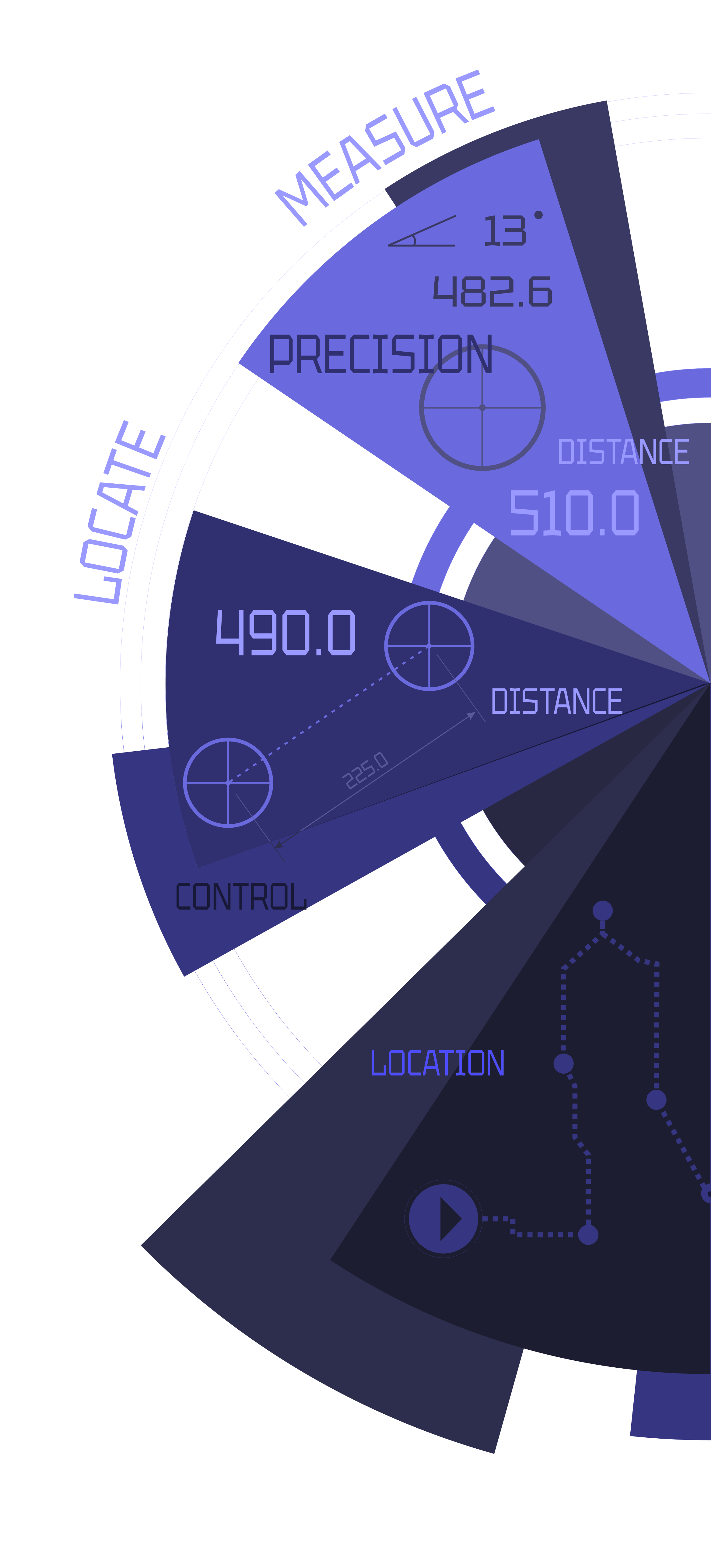XIMITY Labs offers a collection
of precise measurement tools
accessible at all times
XIMITY Labs offers a collection of precise measurement tools accessible at all times

Our technology is a confluence of several diverse fields of human knowledge, unified through sophisticated mathematical principles:
· Old-School Optical Rangefinders: Techniques from early optical rangefinders, like parallax, coincidence, and stereoscopic methods, are foundational. Originally invented in the 18th century and refined through World Wars I and II, these rangefinders use two lenses pointed at the same object. By knowing (a) the fixed distance between the lenses and (b) the angles at which the lenses converge on the object, we can calculate its distance with accuracy. This fundamental geometry underpins many aspects of our approach to rangefinding without specialized equipment.
· Inertial Navigation Systems (INS): INS technology, a highly researched field, contributes to our system’s ability to track movement and displacement without relying on an external reference frame. Using accelerometers and gyroscopes, INS technology allows us to monitor changes in position, providing crucial insights into motion that are independent of GPS or other global coordinates.
· Biomechanics, Specifically Saccadic Eye Movements: Human vision provides a compelling benchmark. Saccadic eye movements involve making hundreds or thousands of rapid, minute adjustments per second to continuously refine visual input. This “biological rangefinding” increases precision beyond the accuracy of each individual glance, an approach we emulate by performing high-frequency optical measurements to achieve unparalleled accuracy.
· AI, Image Recognition, and Object Tracking: Using advanced AI algorithms, our system performs real-time image recognition and object tracking, allowing it to identify, distinguish, and follow objects as they move or change orientation. This transforms raw visual data into actionable insights, enabling precise spatial analysis on standard devices without the need for specialized hardware.
Together, these fields form the foundation of a novel, hardware-free approach to distance measurement, enabling a standard smartphone to perform complex spatial analysis without the need for additional equipment.
